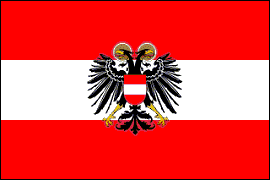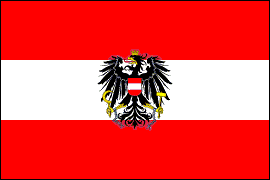AUSTRIA SINCE 1918
NATIONAL & STATE FLAGS
The collapse of the Habsburg Monarchy in 1918 cut its German-speaking heartland adrift. The immediate sequel was the proclamation of a Republic of German Austria (Republik Deutschösterreich) that aspired to unite with Germany. But this was disallowed by the victorious Allied powers and in 1919 a Republic of Austria (Republik Österreich) was proclaimed instead. The new state was a shadow of its former self, with a population of just six and a half million—the German-speaking subjects of Bohemia and other former Habsburg territories being excluded. In the postwar period Austria was beset by economic problems and political instability. As in Germany, paramilitary organizations arose on both the Left and the Right. An Austrian branch of the Nazi Party was established in the early 1920s and its growing influence was a major factor in the March 1933 coup that suppressed the Republic. All parties of the Right except the Nazis joined together in the Fatherland Front (Vaterländische Front). All other parties including the Nazis, were banned. Austria was tranformed into an authoritarian Federal State (Bundesstaat Österreich) with Engelbert Dollfus as chancellor. This "Austrofascist" regime lasted until 1938, when the Anschluß united Austria to the German Reich.In 1945 Austria was separated from Germany and the the Republic was reestablished. Though the country was occupied for a time by the victorious Allies, Austria was treated more as a liberated than a defeated country and most of its postwar political figures had an anti-Nazi background. The country's recovery was greatly assisted by American aid both public and private.
The Austrian State Treaty (1955) brought the occupation to an end and Austria was proclaimed to be fully independent and perpetually neutral, a status that the country has maintained since then, though it is now a member of the European Union. Modern Austria is a federal republic consisting of nine states.














